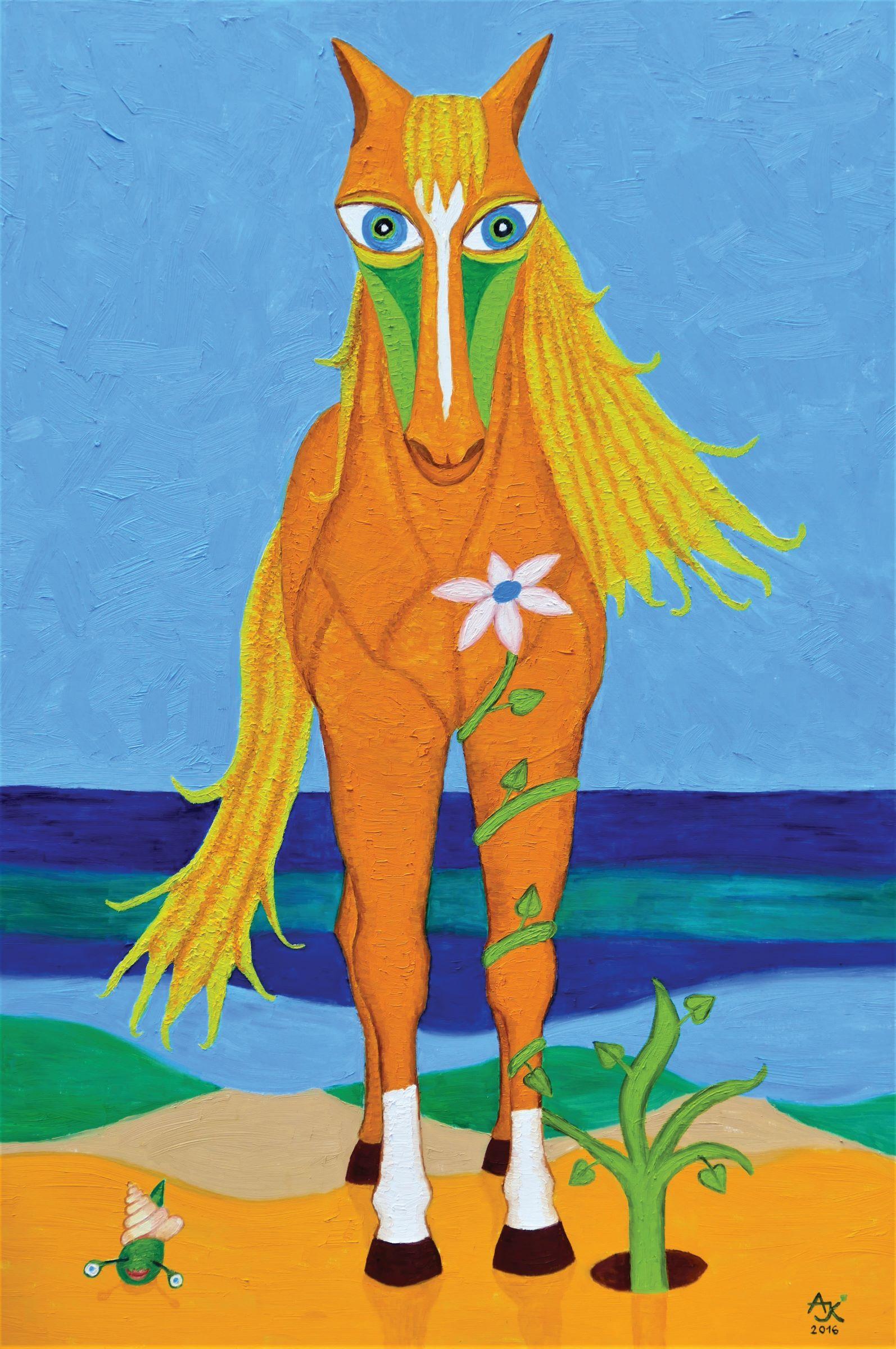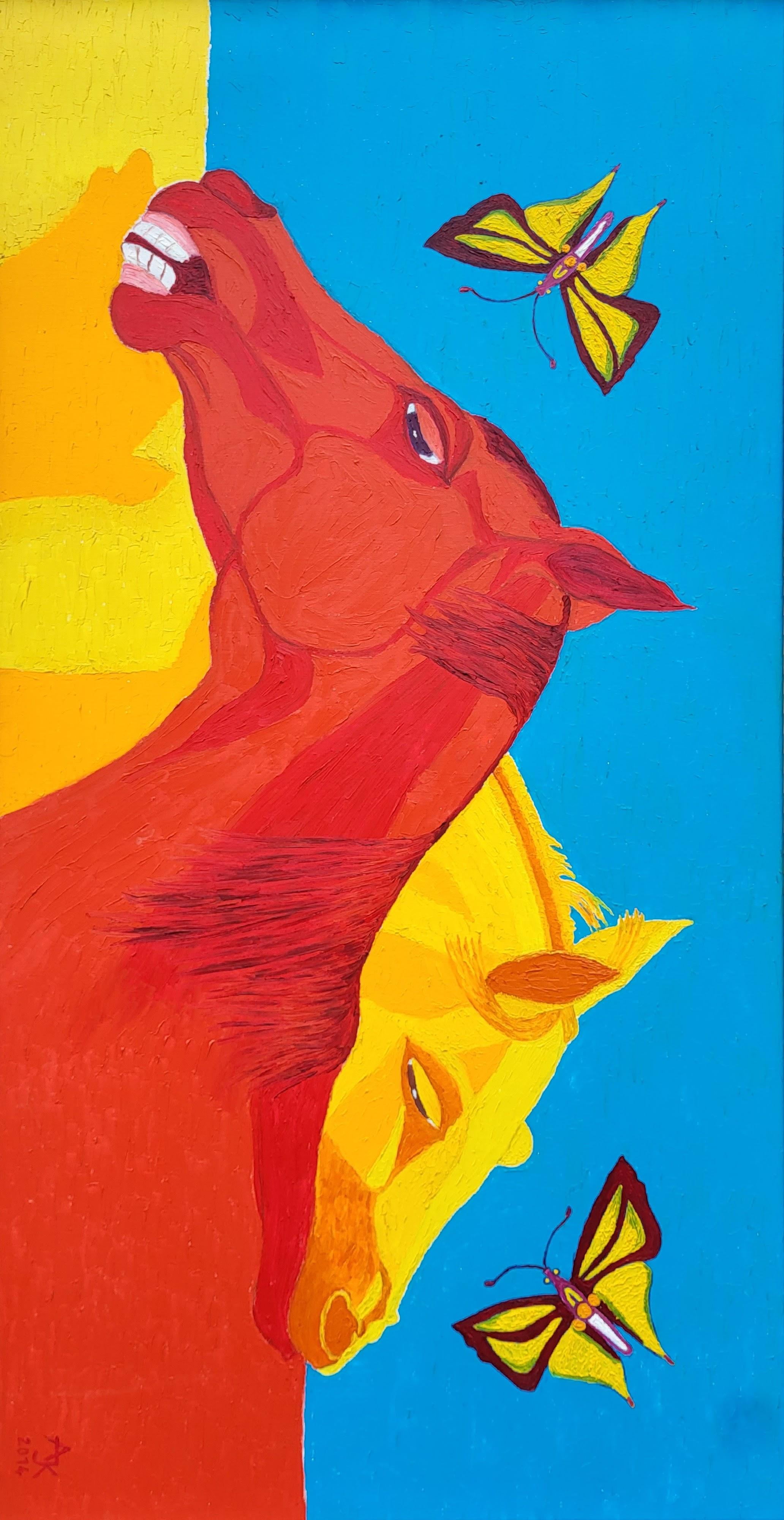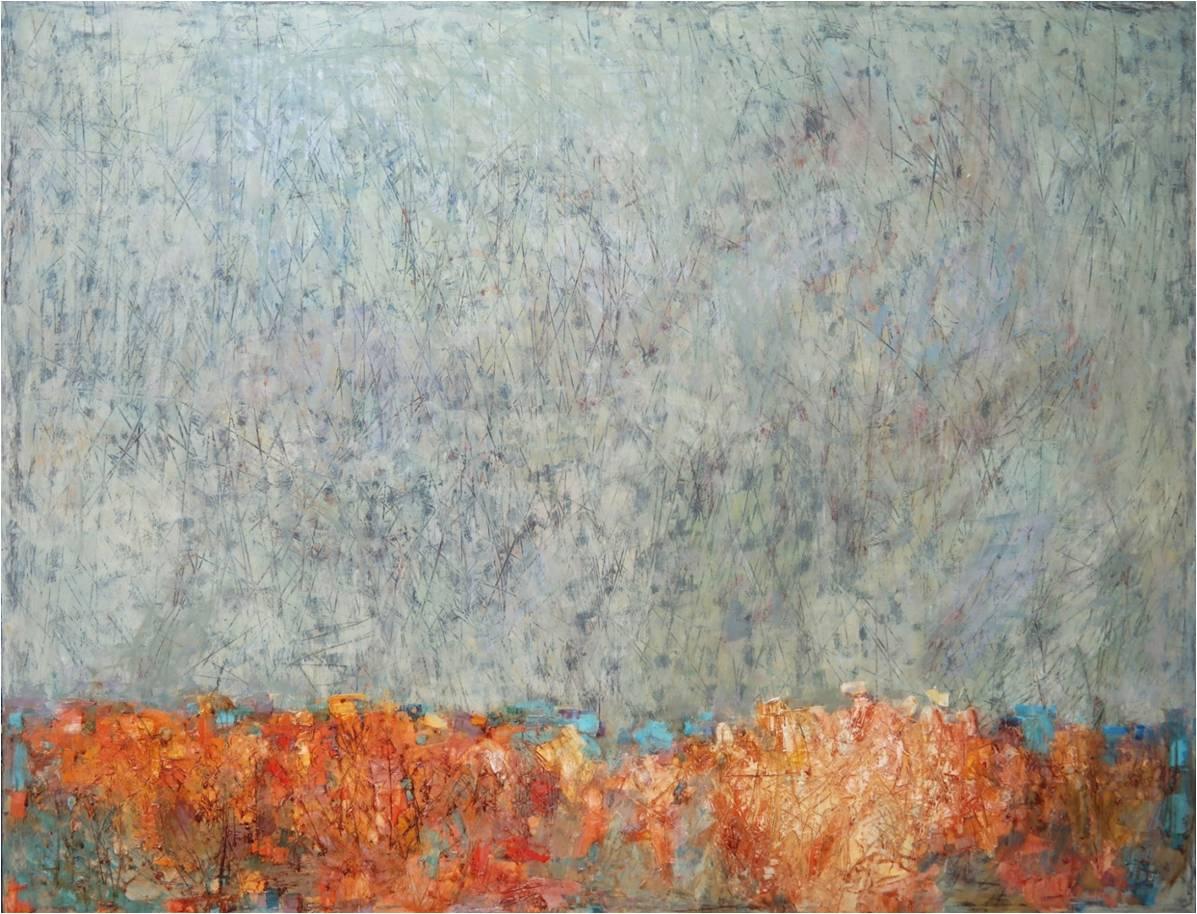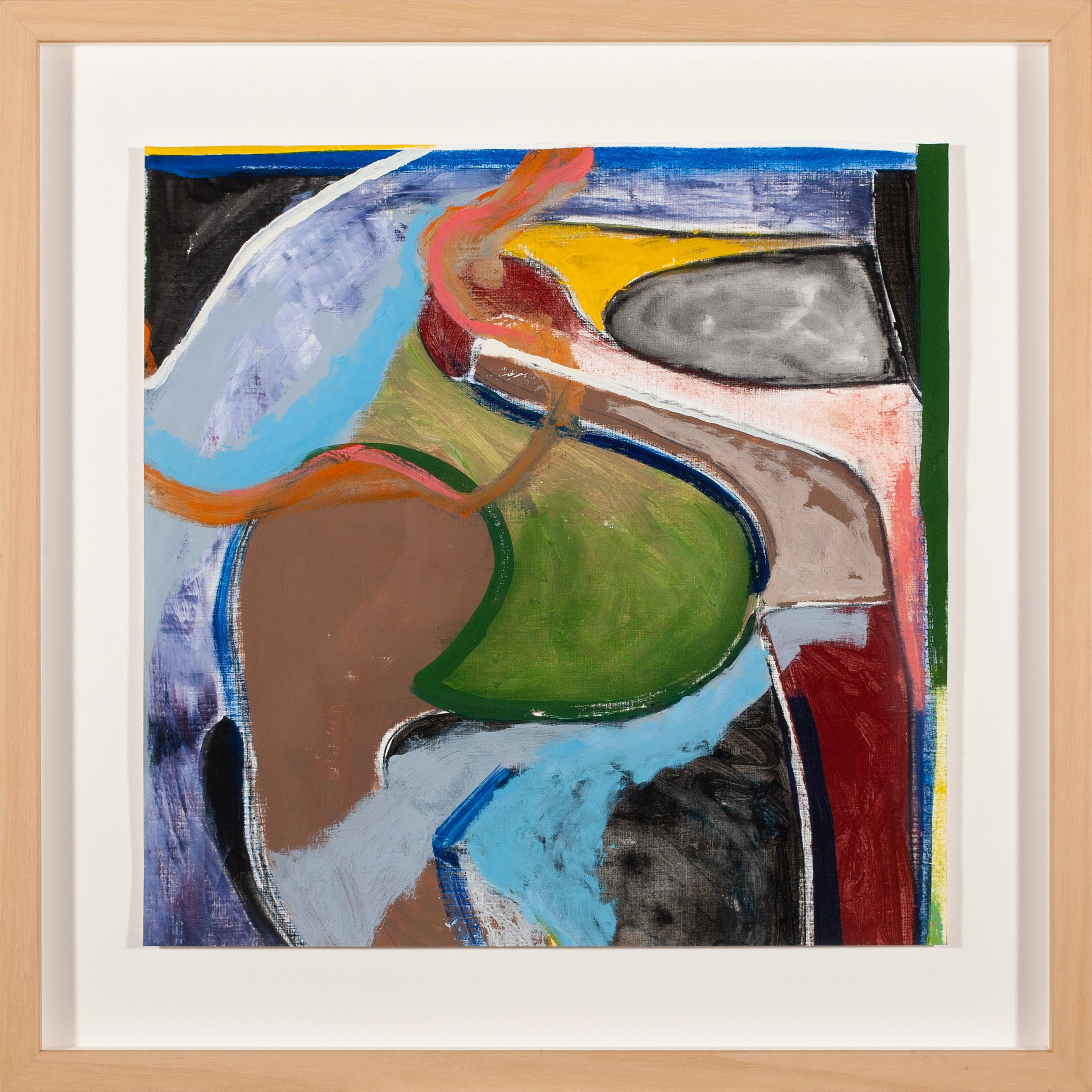Items Similar to Large 20th century abstract painting by contemporary Ohio artist, 3.5 x 4.5 feet
Want more images or videos?
Request additional images or videos from the seller
1 of 7
James LeporeLarge 20th century abstract painting by contemporary Ohio artist, 3.5 x 4.5 feet1962
1962
About the Item
James Lepore (American, 20th Century)
Untitled (Abstract), 1962
Oil on canvas
Signed Lepore 62 lower right
43 x 55 inches
James Lepore is an American artist active in Ohio. Lepore was a professor of Painting and Art History at Youngstown State University in Ohio.
- Creator:James Lepore (American)
- Creation Year:1962
- Dimensions:Height: 43 in (109.22 cm)Width: 55 in (139.7 cm)
- Medium:
- Movement & Style:
- Period:
- Condition:
- Gallery Location:Beachwood, OH
- Reference Number:1stDibs: LU176829981392
About the Seller
No Reviews Yet
Vetted Seller
These experienced sellers undergo a comprehensive evaluation by our team of in-house experts.
Established in 1975
1stDibs seller since 2022
9 sales on 1stDibs
Typical response time: 10 hours
- ShippingRetrieving quote...Ships From: Beachwood, OH
- Return PolicyA return for this item may be initiated within 14 days of delivery.
More From This SellerView All
- Abstract expressionist, white and yellow mid-century modern geometric paintingBy Richard AndresLocated in Beachwood, OHRichard Andres (American, 1927-2013) White & Yellow, c. 1953 oil on canvas signed lower right, signed and titled verso 30 x 20 inches Richard Andres was born in Buffalo, New York in 1927. A graduate of the Cleveland Institute of Art in 1950, he was immediately drafted and served for two years in the army as a mural painter. He received his Master of Arts from Kent State in 1961. A frequent exhibitor at galleries and museums and winner of multiple May Show prizes, Andres taught art in the Cleveland Public Schools for 28 years, as well as teaching the University of Buffalo, the Cleveland Institute of Art and the Western Reserve University. Very little in Richard Andres’ childhood would have predicted his love of classical music, mid-century-modern architecture and certainly not his lifelong passion for art and in particular abstract art. Richard’s father, Raymond, had no more than a third-grade education, and his mother, Clara, was one of thirteen children – only three of whom lived into adulthood and none of whom attended high school. They lived, when Richard was a boy, in a dingy area of Buffalo, NY in a walk-up apartment situated above a tavern. Raymond and Clara supplemented the income from their factory jobs in the bar downstairs with Raymond playing ragtime on the piano and Clara serving drinks. This often left Richard and his two older brothers at home alone to fend for themselves. The two older boys, Raymond and Russell, were - unlike Richard- rather rough and tumble and entertained themselves with stickball, boxing and the like. Richard, on the other hand, from a very young age liked to draw, or better yet even, to paint with the small set of watercolors he received for Christmas one year. Paper, however, at the height of the depression, was hard to come by. Luckily, Clara used paper doilies as decoration for the apartment and Richard would contentedly paint and then cut up doilies, gluing the pieces together to create collages. At eight-years-old, he discovered the Albright-Knox Museum (then known as the Albright Art Gallery) and spent several hours a week there studying the paintings. He was particularly fond of Charles Burchfield‘s landscapes, enamored with their ‘messiness’ and thinking that they somehow captured more ‘feeling’ than works he was previously familiar with. For his tenth Christmas, he asked for and received a ‘how-to’ paint book by Elliot O’Hare. Through this self-teaching, he assembled the portfolio needed for acceptance to Buffalo Technical High School where he studied Advertising Arts. In his Junior year, he was encouraged to enter a watercolor painting, “Two Barns,” in the national 1944-45 Ingersoll Art Award Contest and was one of twelve grand prize winners – each one winning one hundred dollars. More importantly the painting was exhibited at the Carnegie Institute Galleries, which resulted in his winning a national scholarship to the Cleveland School of Art (The Cleveland Art Institute). He flourished at the art school under the tutelage of faculty members such as Carl Gaertner, as well as that of visiting artists such as William Sommer and Henry George Keller. He would say in later years that Gaertner, in particular, influenced his attitude toward life as well as art. “Gaertner,” Andres said, “believed that there was no need to be a ‘tortured artist’, that an artist should rather enjoy beauty, family, and life in general.” Free to spend his days as he chose, he wandered the Cleveland Art Museum for most of the hours he was not attending classes or painting; the remaining time was spent drinking coffee at a local hangout with art school friends – which is where he met fellow Henry Keller scholarship winner, Avis Johnson. Richard was immediately smitten with Avis, but being rather shy, it took him the entire summer of 1948 to build up his courage to ask her out. Over that summer he ‘thought about Avis’ and worked in a diner to save money. He also used the hundred-dollar prize money won in High School to visit the first Max Beckmann retrospective in the United States at the City Art Museum in St. Louis. Over a half century later he spoke of that exhibit with a reverence usually reserved for spiritual matters, “I walked in and it was like nothing I had ever seen before... the color...It just glowed.” Returning to campus in the Fall, the first thing he did was go to the coffee shop in hopes of finding Avis. He did, and she, upon seeing him, realized that she was also smitten with him. They quickly became known as ‘the couple’ on campus, and a year later, with Richard being drafted for the Korean war, they were quickly married by a Justice of the Peace, celebrating after with family at Avis’s Cleveland home. As a gift, faculty member John Paul Miller...Category
1950s Abstract Expressionist Abstract Paintings
MaterialsOil
- Untitled Black & White Abstract Painting, CoBrA MovementLocated in Beachwood, OHTheo Wilhelm Wolvecamp (Dutch, 1925 - 1992) Untitled Oil on canvas Signed and numbered 21 verso 15.75 x 19.75 inches Theo Wilhelm Wolvecamp was a Dutch artist and member of the COBRA group...Category
Mid-20th Century Abstract Abstract Paintings
MaterialsOil
- Untitled Mid Century Abstract Oil Painting New York ArtistBy John OpperLocated in Beachwood, OHJohn Opper (American, 1908 - 1994) Untitled, 1959 Oil on board Signed and dated lower right 14.75 in. h x 18 in. w. 20 in. h. x 24.5 in. w., as framed John Opper described the 1930s...Category
1950s Abstract Abstract Paintings
MaterialsOil
- Untitled abstract expressionist oil painting by Cleveland School artistBy Richard AndresLocated in Beachwood, OHRICHARD ANDRES American, 1927–2013 Untitled, c. 1950 oil on canvas signed lower left 10 x 7 inches Richard Andres was born in Buffalo, New York in 1927. A graduate of the Clevelan...Category
1950s Abstract Expressionist Abstract Paintings
MaterialsOil
- Fragment, abstract expressionist mid-century painting, Cleveland School artistBy Richard AndresLocated in Beachwood, OHRichard Andres American, 1927-2013 oil on canvas signed and titled verso 19.5 x 24 inches 20 x 25 inches, framed Richard Andres was born in Buffalo, New York in 1927. A graduate of ...Category
1970s Abstract Expressionist Abstract Paintings
MaterialsOil
- Naval Occurrence, orange, blue & green mid-century, abstract geometrical workBy Richard AndresLocated in Beachwood, OHRichard Andres (American, 1927-2013) Naval Occurrence, c. 1963 oil on canvas signed and titled verso 24 x 32 inches Richard Andres was born in Buffalo, New York in 1927. A graduate of the Cleveland Institute of Art in 1950, he was immediately drafted and served for two years in the army as a mural painter. He received his Master of Arts from Kent State in 1961. A frequent exhibitor at galleries and museums and winner of multiple May Show prizes, Andres taught art in the Cleveland Public Schools for 28 years, as well as teaching the University of Buffalo, the Cleveland Institute of Art and the Western Reserve University. Very little in Richard Andres’ childhood would have predicted his love of classical music, mid-century-modern architecture and certainly not his lifelong passion for art and in particular abstract art. Richard’s father, Raymond, had no more than a third-grade education, and his mother, Clara, was one of thirteen children – only three of whom lived into adulthood and none of whom attended high school. They lived, when Richard was a boy, in a dingy area of Buffalo, NY in a walk-up apartment situated above a tavern. Raymond and Clara supplemented the income from their factory jobs in the bar downstairs with Raymond playing ragtime on the piano and Clara serving drinks. This often left Richard and his two older brothers at home alone to fend for themselves. The two older boys, Raymond and Russell, were - unlike Richard- rather rough and tumble and entertained themselves with stickball, boxing and the like. Richard, on the other hand, from a very young age liked to draw, or better yet even, to paint with the small set of watercolors he received for Christmas one year. Paper, however, at the height of the depression, was hard to come by. Luckily, Clara used paper doilies as decoration for the apartment and Richard would contentedly paint and then cut up doilies, gluing the pieces together to create collages. At eight-years-old, he discovered the Albright-Knox Museum (then known as the Albright Art Gallery) and spent several hours a week there studying the paintings. He was particularly fond of Charles Burchfield‘s landscapes, enamored with their ‘messiness’ and thinking that they somehow captured more ‘feeling’ than works he was previously familiar with. For his tenth Christmas, he asked for and received a ‘how-to’ paint book by Elliot O’Hare. Through this self-teaching, he assembled the portfolio needed for acceptance to Buffalo Technical High School where he studied Advertising Arts. In his Junior year, he was encouraged to enter a watercolor painting, “Two Barns,” in the national 1944-45 Ingersoll Art Award Contest and was one of twelve grand prize winners – each one winning one hundred dollars. More importantly the painting was exhibited at the Carnegie Institute Galleries, which resulted in his winning a national scholarship to the Cleveland School of Art (The Cleveland Art Institute). He flourished at the art school under the tutelage of faculty members such as Carl Gaertner, as well as that of visiting artists such as William Sommer and Henry George Keller. He would say in later years that Gaertner, in particular, influenced his attitude toward life as well as art. “Gaertner,” Andres said, “believed that there was no need to be a ‘tortured artist’, that an artist should rather enjoy beauty, family, and life in general.” Free to spend his days as he chose, he wandered the Cleveland Art Museum for most of the hours he was not attending classes or painting; the remaining time was spent drinking coffee at a local hangout with art school friends – which is where he met fellow Henry Keller scholarship winner, Avis Johnson. Richard was immediately smitten with Avis, but being rather shy, it took him the entire summer of 1948 to build up his courage to ask her out. Over that summer he ‘thought about Avis’ and worked in a diner to save money. He also used the hundred-dollar prize money won in High School to visit the first Max Beckmann retrospective in the United States at the City Art Museum in St. Louis. Over a half century later he spoke of that exhibit with a reverence usually reserved for spiritual matters, “I walked in and it was like nothing I had ever seen before... the color...It just glowed.” Returning to campus in the Fall, the first thing he did was go to the coffee shop in hopes of finding Avis. He did, and she, upon seeing him, realized that she was also smitten with him. They quickly became known as ‘the couple’ on campus, and a year later, with Richard being drafted for the Korean war, they were quickly married by a Justice of the Peace, celebrating after with family at Avis’s Cleveland home. As a gift, faculty member John Paul Miller designed and made the simple gold wedding ring Avis wore for their 65 years of marriage. During those 65 years neither wavered in their mutual love, nor in the respect they shared for one another’s art. The couple lived in a converted chicken coop in Missouri while Richard was in boot camp. At the camp, he would volunteer for any job offered and one of those jobs ended up being painting road signs. His commander noticed how quickly and neatly he worked and gave him more painting work to do - eventually recommending him for a position painting murals for Army offices in Panama. Until her dying day, Avis remained angry that “The army got to keep those fabulous murals and they probably didn’t even know how wonderful they were.” In Panama, their first son, Mark, was born. After Richard’s discharge in 1953, they moved back to the Cleveland area and used the GI bill to attend Kent State gaining his BA in education. The small family then moved briefly to Buffalo, where Richard taught at the Albright Art School and the University of Buffalo – and their second son, Peter, was born. Richard had exhibited work in the Cleveland May Show and the Butler Art Museum during his art school years, and during the years in Buffalo, his work was exhibited at the gallery he had so loved as a child, the Albright Art Gallery. In 1956, the family moved back to the Cleveland area and Richard began teaching art at Lincoln West High School during the day while working toward his MA in art at Kent State in the evenings. Avis and Richard, with the help of an architect, designed their first home - a saltbox style house in Hudson, Ohio, and in 1958, their third son, Max (after Max Beckmann) was born. Richard enjoyed the consistency of teaching high school as well as the time it gave him to paint on the weekends and during the summer months. In 1961, he received his MA and his daughter, Claire, was born. With a fourth child, the house was much too small, and Avis and Richard began designing their second home. An admirer of MCM architecture, Richard’s favorite example of the style was the Farnsworth house – he often spoke of how the concepts behind this architectural style, particularly that of Mies van der Rohe, influenced his painting. Andres described himself as a 1950’s...Category
1960s Abstract Geometric Abstract Paintings
MaterialsOil
You May Also Like
- An Amber MareLocated in Barcelona, ESOil painting on canvas.Category
2010s Abstract Abstract Paintings
MaterialsOil
- Horse ParadiseLocated in Barcelona, ESOil painting on canvas.Category
2010s Abstract Abstract Paintings
MaterialsOil
- The White Line, triptych- Yesterday, Today, TomorrowLocated in Barcelona, ESOil painting on canvas.Category
2010s Abstract Abstract Paintings
MaterialsOil
- Composition N 32. Oil on Canvas. 59 X 78 Inch. 2021.Located in Brooklyn, NYArt pieces of Giorgi Vepkhvadze are Abstract expressionism for modern interior designs for Residential and Commercial spaces. Well suited for New York Apartments and Houses. Artist g...Category
2010s Abstract Abstract Paintings
MaterialsCanvas, Oil
- Transitions and Thresholds No. 1Located in Columbia, MOMeyer studied art at University of Central Missouri, Indiana State University and received her degree in painting and drawing from Columbia College. She has had the privilege of havi...Category
21st Century and Contemporary Abstract Abstract Paintings
MaterialsWax, Oil, Archival Paper
- Untitled 01 [Remains of the Remains 01] - Contemporary, Black, White, AbstractBy Zsolt BerszánLocated in Berlin, DEUntitled 01 [Remains of the Remains 01], 2018 oil on canvas 78 47/64 H x 59 1/16 W in 200 H x 150 W cm The large-sized paintings, signed by Zsolt Berszán...Category
2010s Abstract Expressionist Abstract Paintings
MaterialsCanvas, Oil





